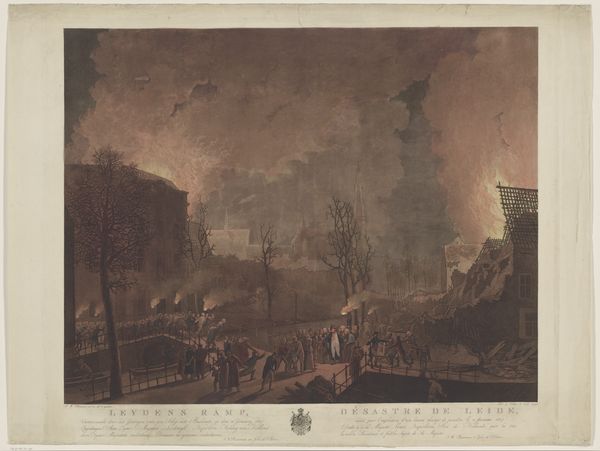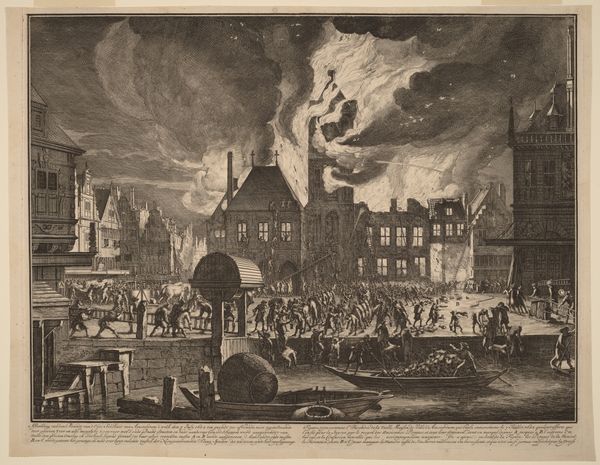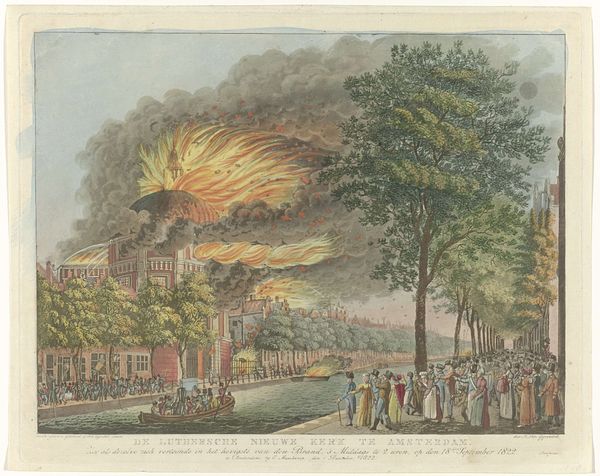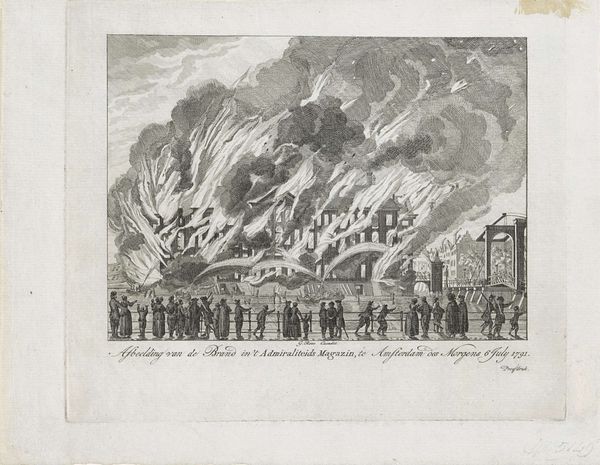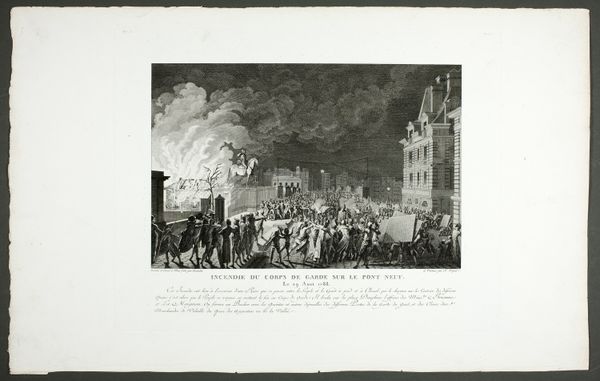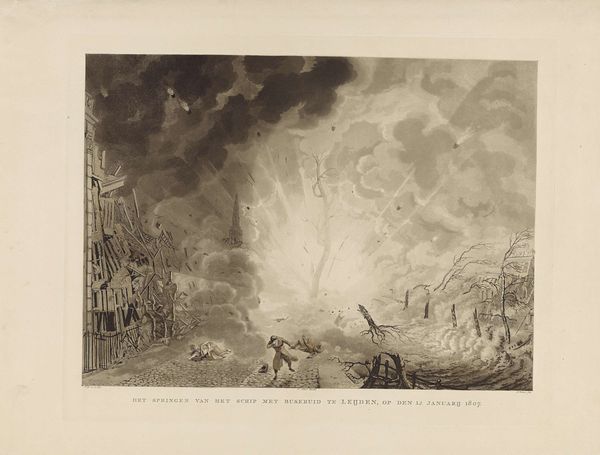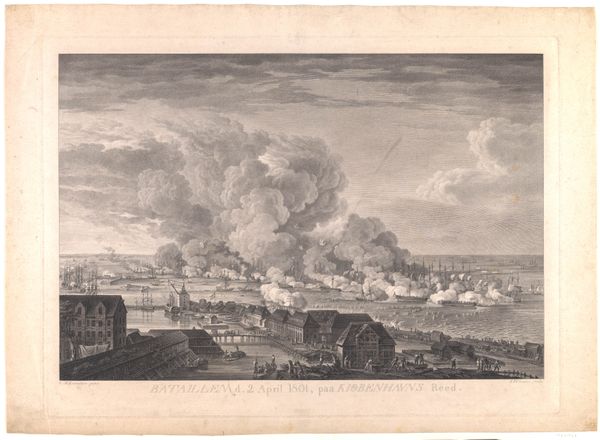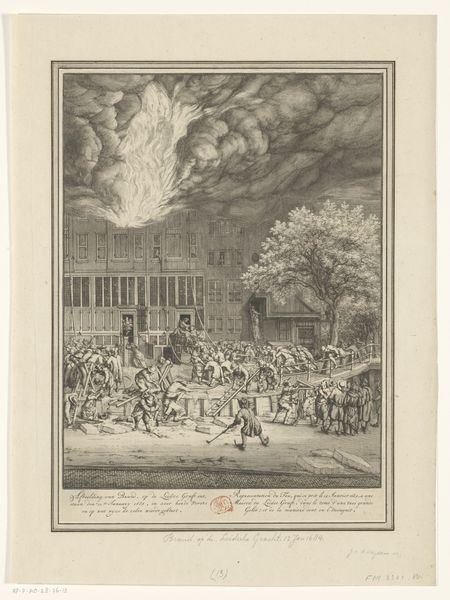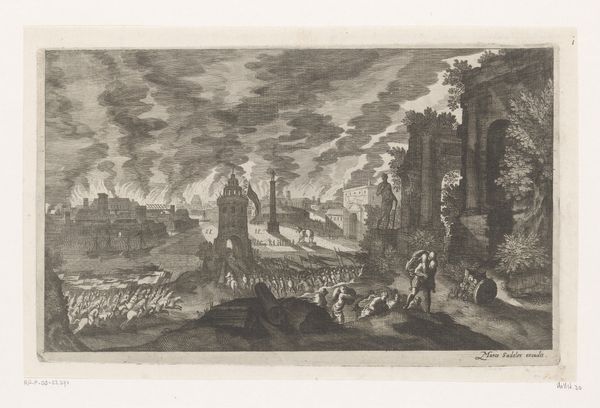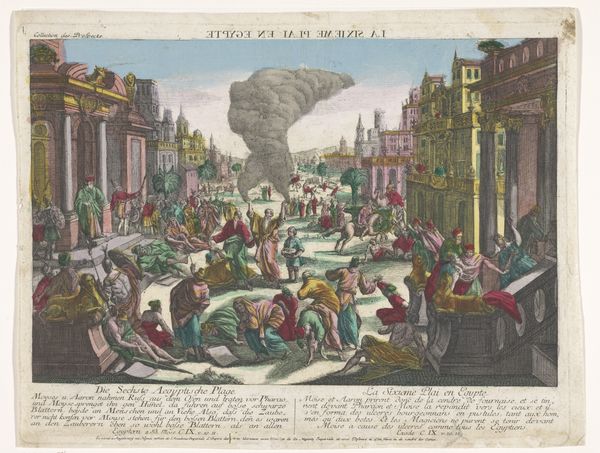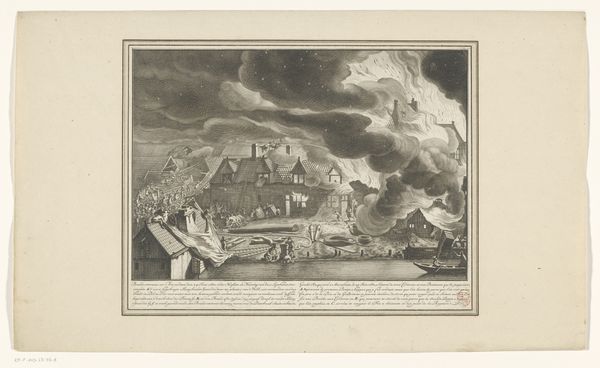
København, natten mellem 4. og 5. september set fra Christianshavn 1807
0:00
0:00
aquatint, painting, print
#
aquatint
#
painting
# print
#
romanticism
#
cityscape
#
history-painting
Dimensions: 378 mm (height) x 458 mm (width) (plademaal)
Editor: This aquatint by Gerhard Ludvig Lahde, "Copenhagen, the night between the 4th and 5th of September seen from Christianshavn", created in 1807, really grabs you. The orange glow of the fires dominates the scene. What do you see when you look at this? Curator: I see more than just a depiction of destruction; I see a visual representation of power, both inflicted and endured. Lahde isn’t simply documenting a historical event; he’s framing the devastating British bombardment of Copenhagen within a context of national identity and trauma. Editor: Trauma? How so? Curator: Consider the romanticism. While it aestheticizes the event, the focus on the dramatic sky and fleeing figures speaks to the emotional impact of war on civilians. This wasn't just about buildings being destroyed. This was about the fabric of society being torn. It's a cityscape, yes, but it's fundamentally a history painting, a commentary on power and vulnerability. What power dynamics do you think are at play here? Editor: Well, clearly there's the power of the British Navy inflicting violence. But you also see people helping each other, suggesting resilience, too. Curator: Precisely. It prompts questions about who holds power, who is subjected to it, and how individuals and communities respond. It forces us to consider how historical events are not neutral occurrences, but are shaped by ideologies and have lasting consequences. This image functions as a potent reminder of how power operates, and how crucial resistance is. Editor: It’s interesting to consider how a work seemingly about a specific historical event can spark conversations about broader social issues. Curator: Absolutely. Art offers this unique potential to bridge the historical with the contemporary, prompting us to critically examine our own world and its power structures.
Comments
No comments
Be the first to comment and join the conversation on the ultimate creative platform.
